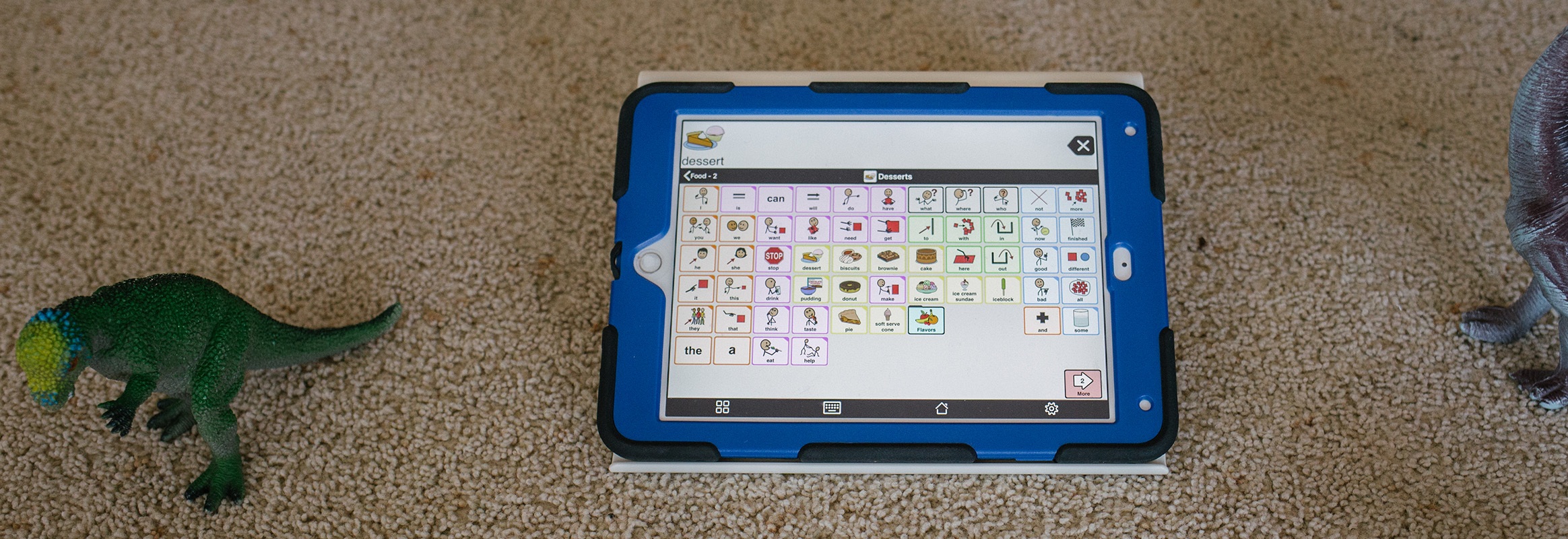

The challenge facing the industry, whose biennial conference starts Saturday in Pittsburgh, is how to develop text-to-speech technologies that can predict the emotion, or tone, a person might want to use.

Most text-to-speech devices do give users the ability to say almost anything, and many allow users to choose whether they want to sound happy, angry or sad. For example the word “impressive” is stitched together from the words impossible, president and detective. From this bank of words, the application can synthesize any word in the English language.

During the recording sessions for Proloquo2Go 2.1, audio engineers collected several thousand phrases and hundreds of words.
EXIT PROLOQUO SOFTWARE
The software cost AssistiveWare about $100,000 to develop. On one hand, the sound of his voice would be more normal, but on the other hand, all the other little boys using Proloquo2Go would have the same voice. When Shanay Finney, 30, learned that her 10-year-old autistic son, Dahmier, might be able to have an age-appropriate voice, she reacted with mixed emotions. Many of the larger voice companies like Nuance, in Massachusetts, and Ivona, in Poland, now offer voices in multiple languages and accents. But faster computer processors with more memory have enabled sound engineers to make artificial voices sound more human. The progress is, in part, a side effect of the adoption of automated voices in everything from credit card company service lines to the grocery store checkout kiosk. The release of Proloquo2Go’s boy and girl voices - the company also has two other children’s voices with a British accent for that market - is an indicator of new progress in the decades-old text-to-speech industry. With little competitive pressure to replicate children’s voices, most companies decided children could get by with the altered adult voices. But without a baseline recording, the voices to date have lacked the natural sound of a child’s voice. Sound engineering can manipulate adult voices, adding filters that adjust for the higher pitch of a child’s voice, for example. The $190 application can be bought on iTunes Wednesday, but people who already own the app can add the latest voices at no charge. Most existing children’s voices sound “like adults on helium,” said David Niemeijer, chief executive and lead developer at AssistiveWare, which developed the software Enrique tested.ĪssistiveWare and its partner, Acapela Group, developed the next version, Proloquo2Go 2.1, which features two children’s voices - known as Josh and Ella - actually recorded by children. The effect can be startling to those listening because it doesn’t sound like a child’s voice. Until recently, devices that help children like Enrique speak used modified adult voices. “The voice now matches the boy,” said John Mendez, Enrique’s father. “I want to play with the wrestling guys,” said Enrique in a voice not quite his own, but pretty close.Įnrique has Down syndrome and speech apraxia, which means that he cannot speak, aside from a few grunts and “Ma” in the word “Mama.” He was able to speak to his brother, though, with an iPad loaded with the latest version of a widely used text-to-speech application, Proloquo2Go. Enrique Mendez, 9, and his older brother, Cristian, 11, sorted through a plastic bin of toys in their New Jersey home.


 0 kommentar(er)
0 kommentar(er)
